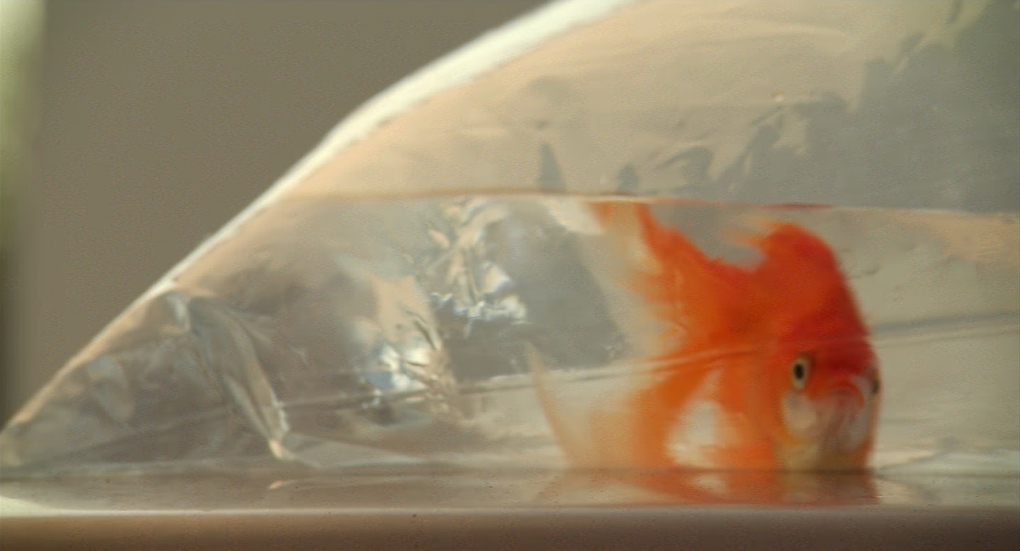
Figure 1
Me and You and Everyone We Know – fish scene
Goldfish have been domesticated by humans for thousands of years, and Me and You and Everyone We Know invites an engrossing encounter with the sea animal as it appears in a plastic bag swaying on top of a fast-moving car. This clip of a fleeting interaction with a goldfish within Miranda July’s romantic comedy, allows a poetic allegory into the human relationship with technology, and the struggle for intimacy within the digital age.
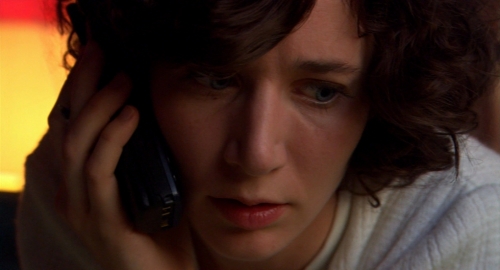
Figure 2 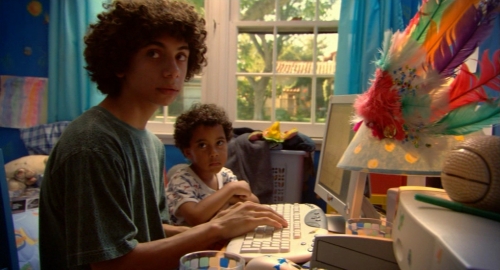
Figure 3 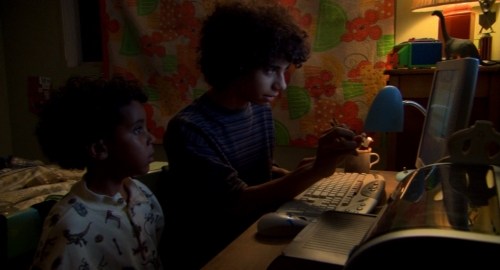
Figure 4
July is no stranger to authenticity, as the filmmaker immediately depicts an extreme close up of the goldfish being placed in an abnormal environment. This vignette scene presents the main character, Christine, and one of the elderly people she provides lifts for, Michael, abruptly ending their conversation as they stop to watch the fish sway on top of the manufactured vehicle. Here, the scene shifts to a melancholic tone as the characters witness the journey of the goldfish in its last moments of life.
I want you to die knowing that you were loved. I love you.
July’s work explores the ‘quiet search for connection and the essence of human nature’ and essentially, what it means to love one another. Biophilia, a noun used to describe the human love for nature, is notable within this scene as Christine proclaims directly to the fish: “I want you to die knowing you were loved. I love you.”. This passionate dialogue from the character links to the way in which humans believe that they can give meaning and purpose to animal life, by acknowledging the animal’s existence and fundamental feelings. However, it is argued by scholar Kellert that, ‘human identity and personal fulfilment somehow depend on our relationship to nature’, which suggests that instead, animals give human life meaning.
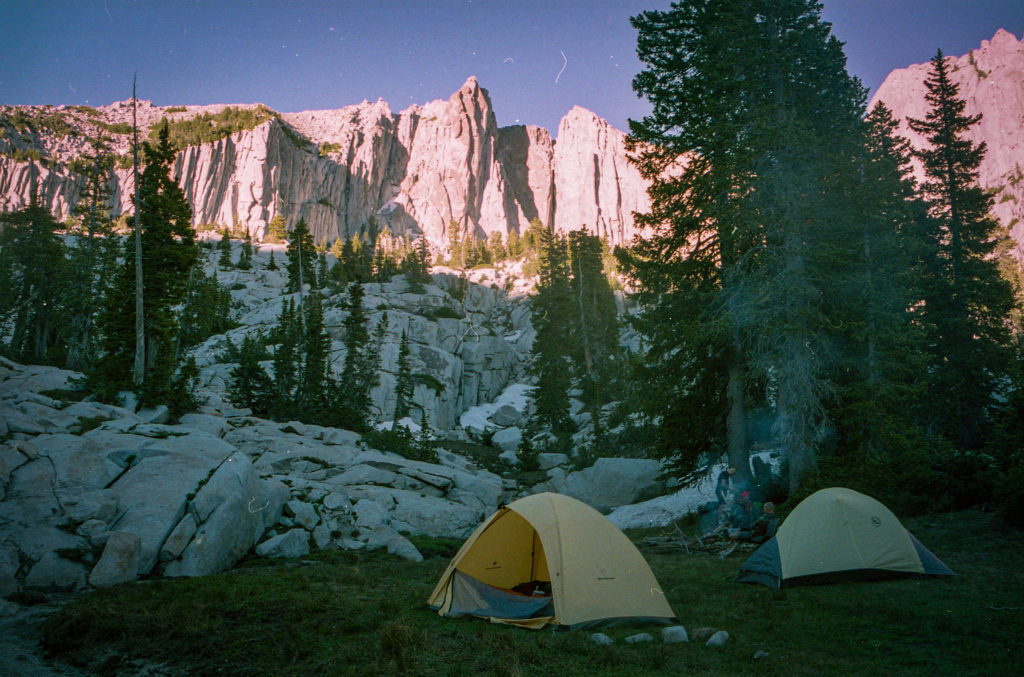
Figure 6 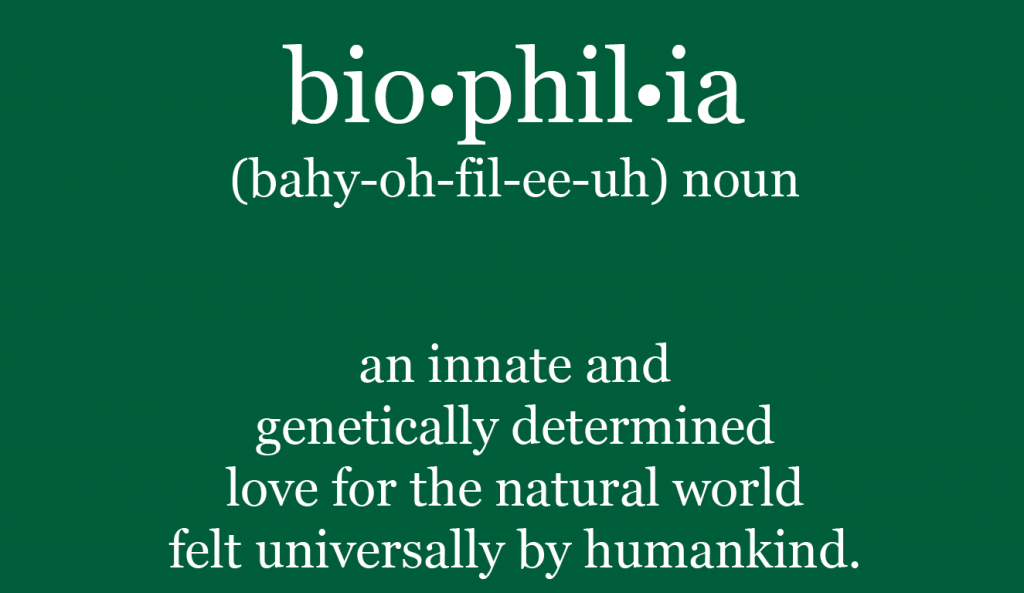
Figure 7 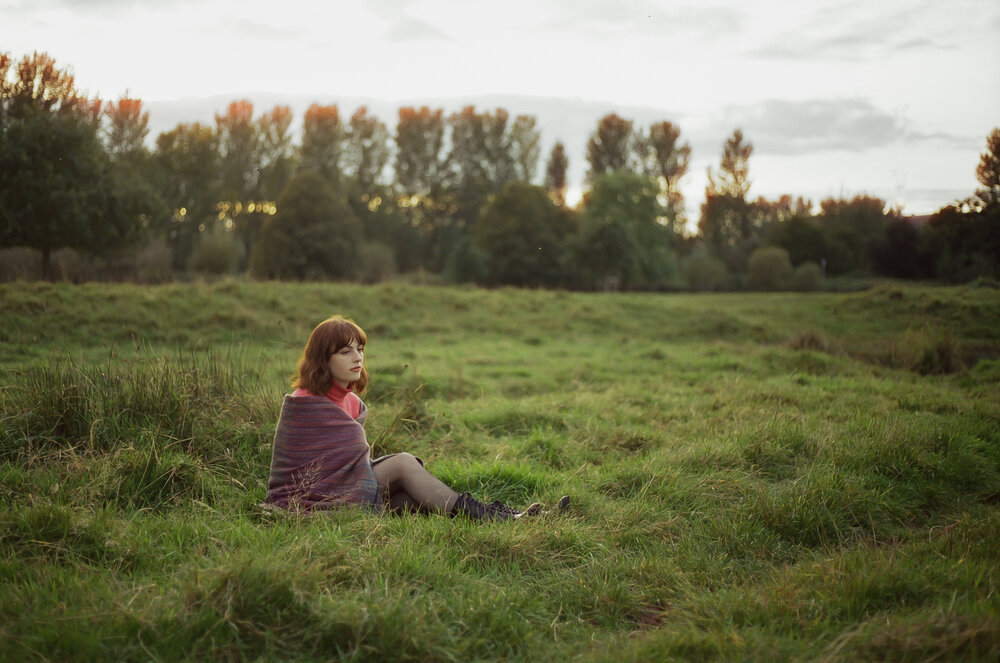
Figure 8
In relation to the latter, July’s film explores the notion of loneliness and what it means to be connected with other humans. The filmmaker produces a longing for intimacy from the characters, and this is only enhanced by the juxtaposition of the representation of a goldfish, an animal whose emotional capacity and complexity is yet to be discovered.
July displays semantic affinity with the transparent bag and water in the way they act as a glass screen, framing the audience looking at the animal through a screen, through a screen. The film director constructs a melancholic tone, as she directs her undivided attention to the similarities of the goldfish and the characters within the film, that whether in a plastic bag, car or film, they are trapped in an inauthentic environment.These close up shots of the characters in the car allow the audience to connect with the animal’s fate, engage in the goldfish’s final moments and sense the intense emotions of the characters. Here, July instigates thoughts about scholar Palmer’s comments on how ‘the everyday interactions with animals causes us to reflect on our own lives in relation to those animals – and to other animals’.
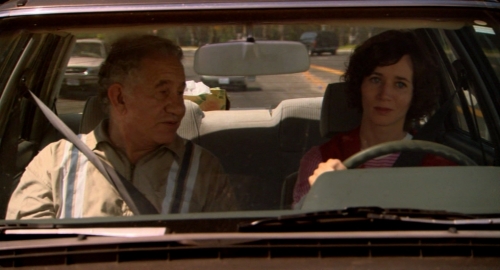
Figure 9 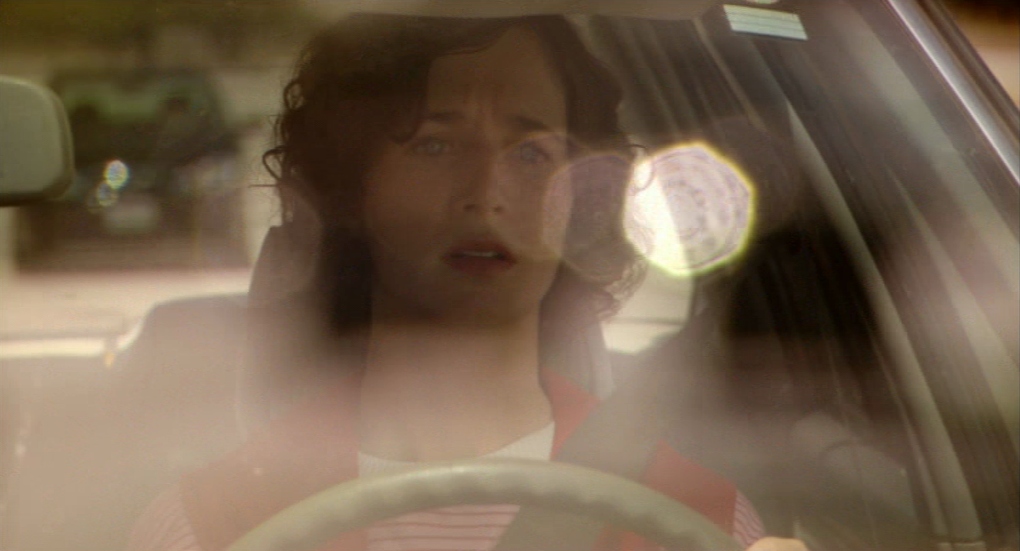
Figure 10 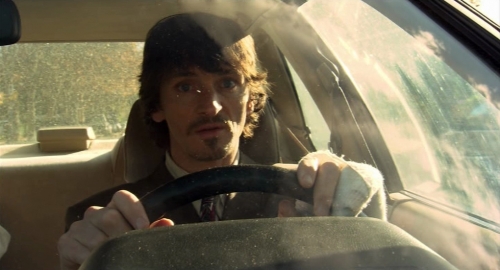
Figure 11
July’s independent film provides an interesting observational perspective that explores loss and animal-human relationships within the twenty-first century. The final dialogue from Michael, “We are all together in this” before the fish falls to its inevitable death, allows an insight into how, although all species have different experiences, we all share the inescapable fate of mortality.
Bibliography
Kellert. S, ‘The Biological Basis for Human Values of Nature’, The Biophilia Hypothesis, (1993)
Palmer. C, ‘Conclusion: A Conversation’, Killing Animals, (2006), pp.207
Propes. R, The Independent Critic <https://theindependentcritic.com/me_and_you_and_everyone_we_know> [Accessed 11 November 2022]
Me and You and Everyone We Know, dir. By. Miranda July (ICF, 2005)
Figure 1. <https://film-grab.com/2017/11/06/me-and-you-and-everyone-we-know/> [accessed 11 November 2022]
Figure 2. <https://film-grab.com/2017/11/06/me-and-you-and-everyone-we-know/> [accessed 11 November 2022]
Figure 3. <https://film-grab.com/2017/11/06/me-and-you-and-everyone-we-know/> [accessed 11 November 2022]
Figure 4. <https://film-grab.com/2017/11/06/me-and-you-and-everyone-we-know/> [accessed 11 November 2022]
Figure 5. <https://film-grab.com/2017/11/06/me-and-you-and-everyone-we-know/> [accessed 11 November 2022]
Figure 6. <https://photo.adrianhallberg.com/landscape-film-photography/> [accessed 16 January 2023]
Figure 7. <https://www.naava.io/editorial/biophilia-love-of-life> [accessed 11 November 2022]
Figure 8. <https://www.stevieellaphotography.com/blog/2021/4/28/why-film-photography> [accessed 16 January 2023]
Figure 9. <https://film-grab.com/2017/11/06/me-and-you-and-everyone-we-know/> [accessed 11 November 2022]
Figure 10. <https://film-grab.com/2017/11/06/me-and-you-and-everyone-we-know/> [accessed 11 November 2022]
Figure 11. <https://film-grab.com/2017/11/06/me-and-you-and-everyone-we-know/> [accessed 11 November 2022]